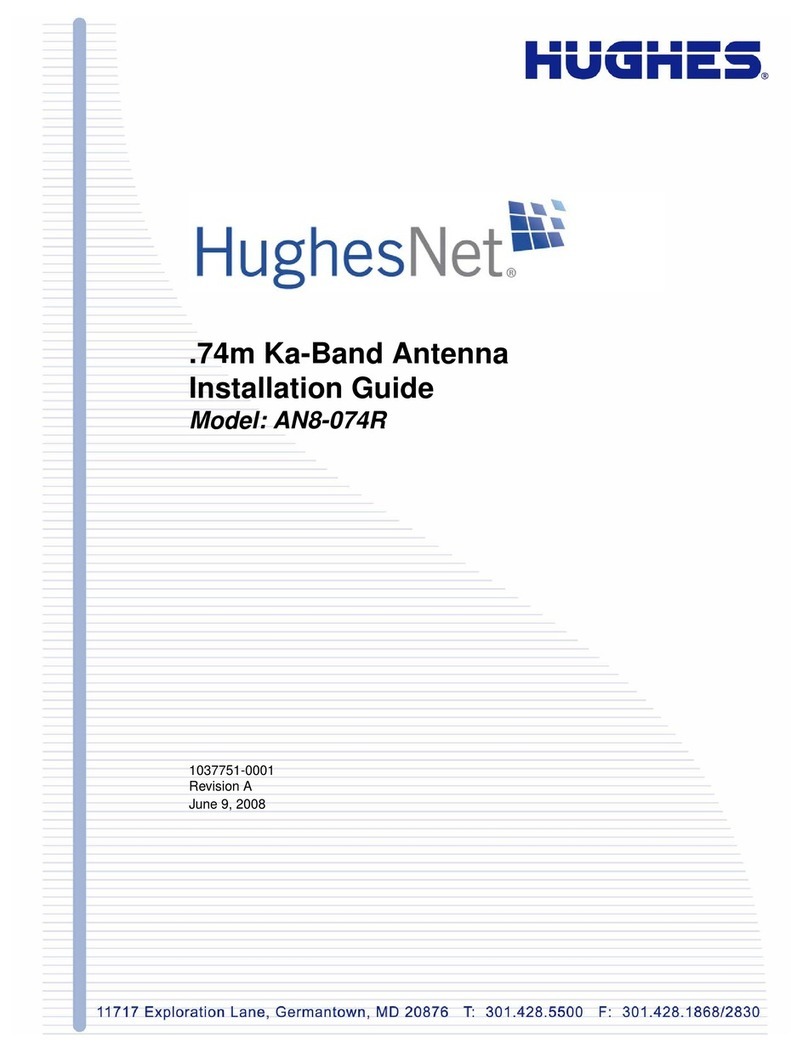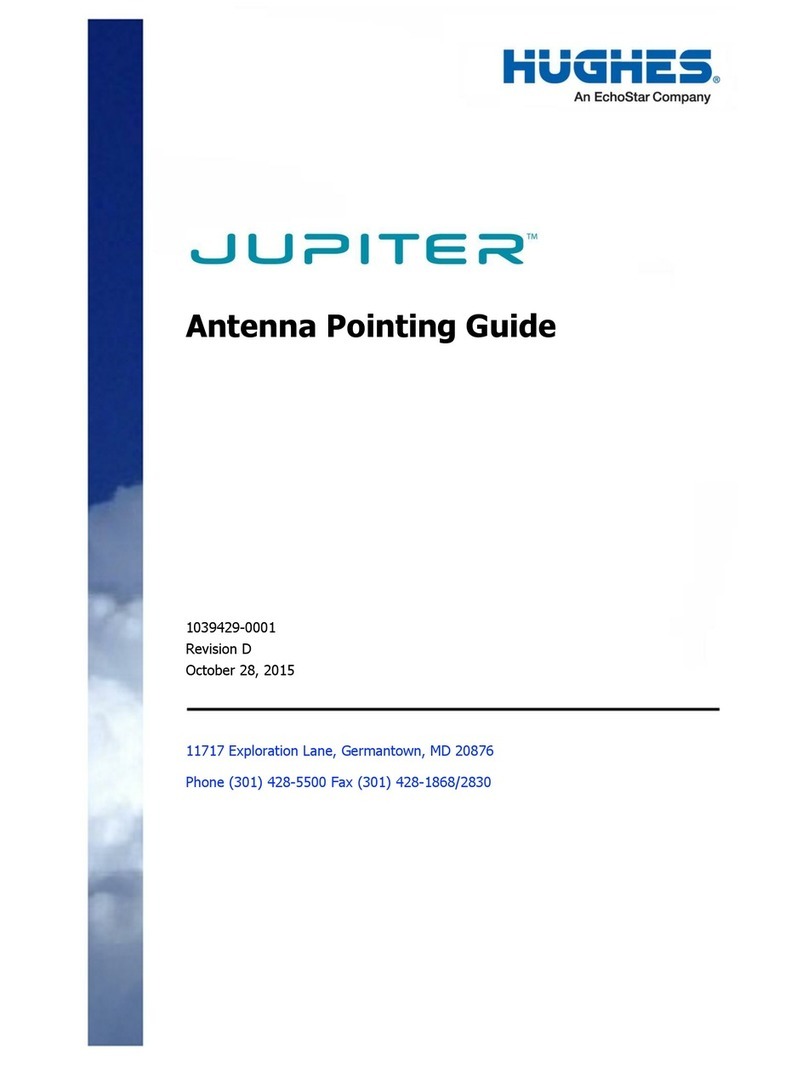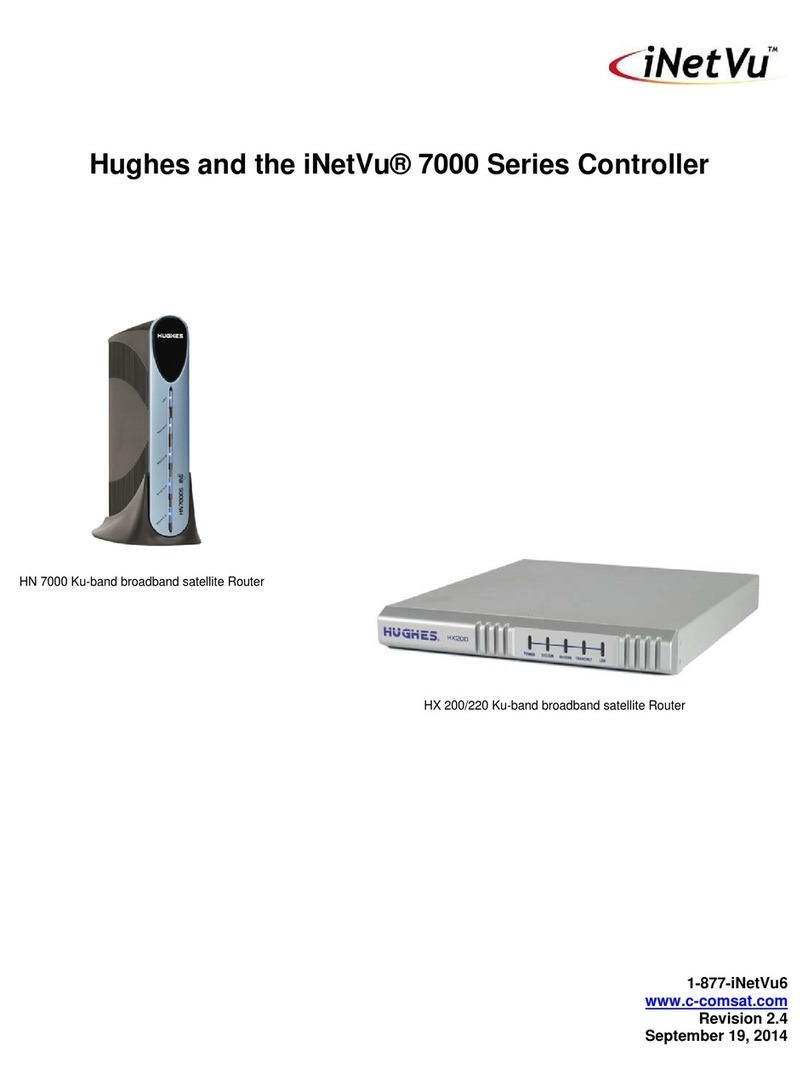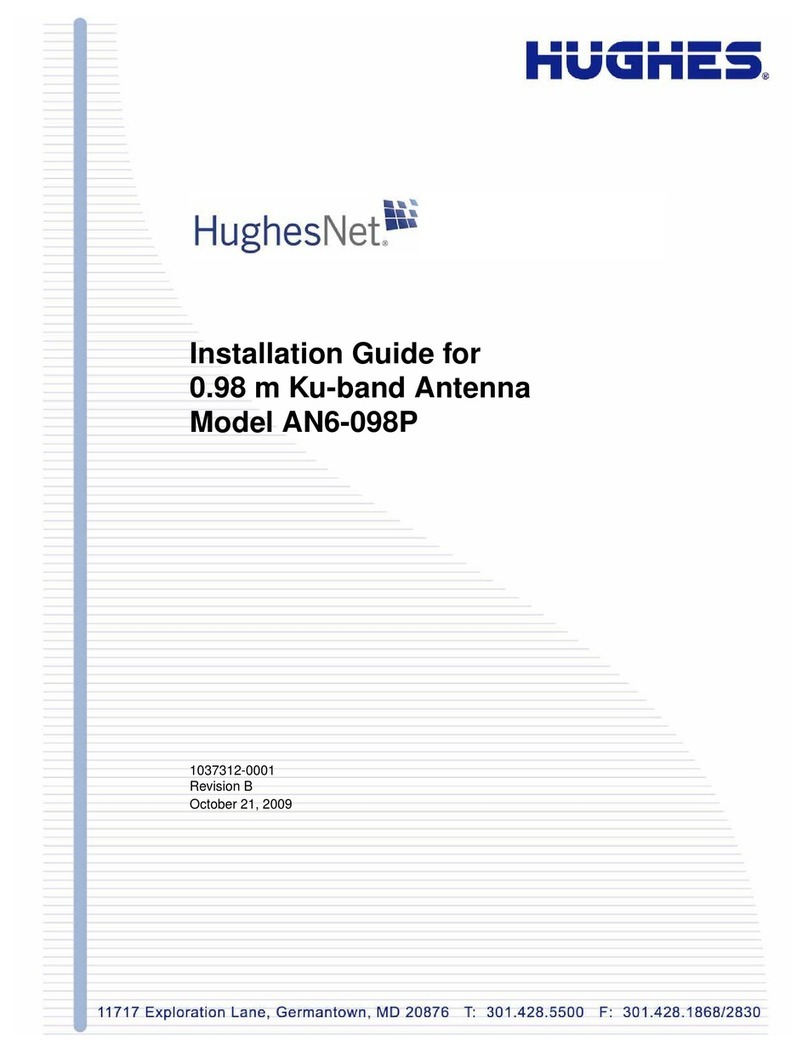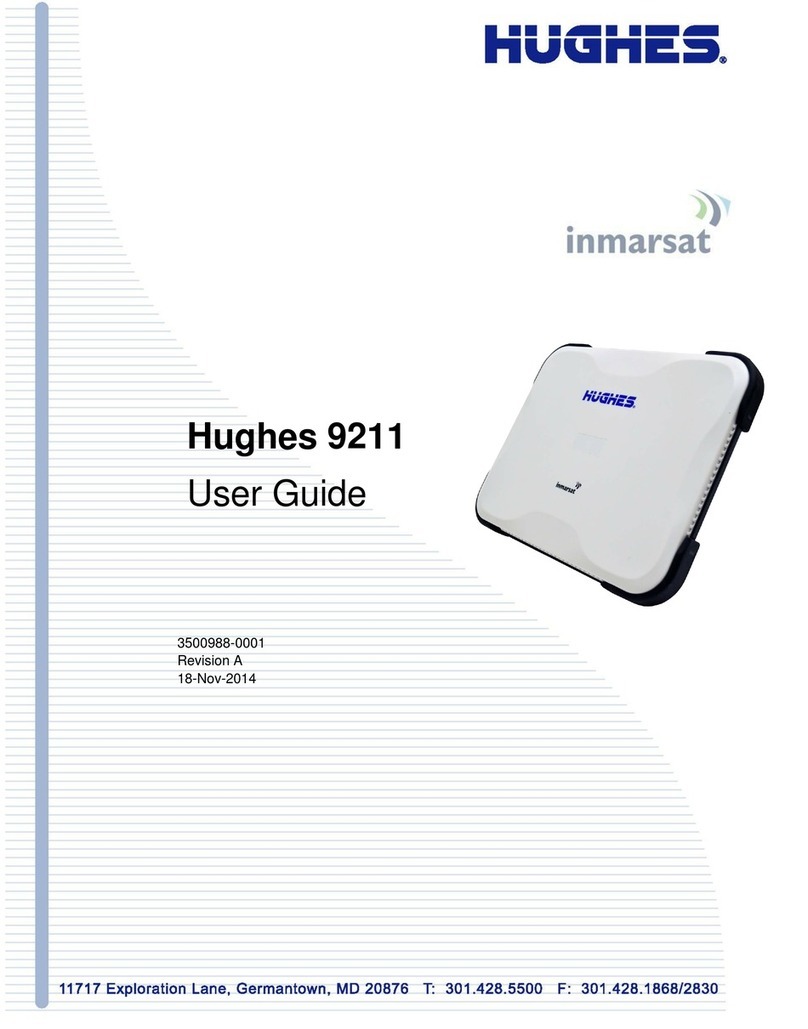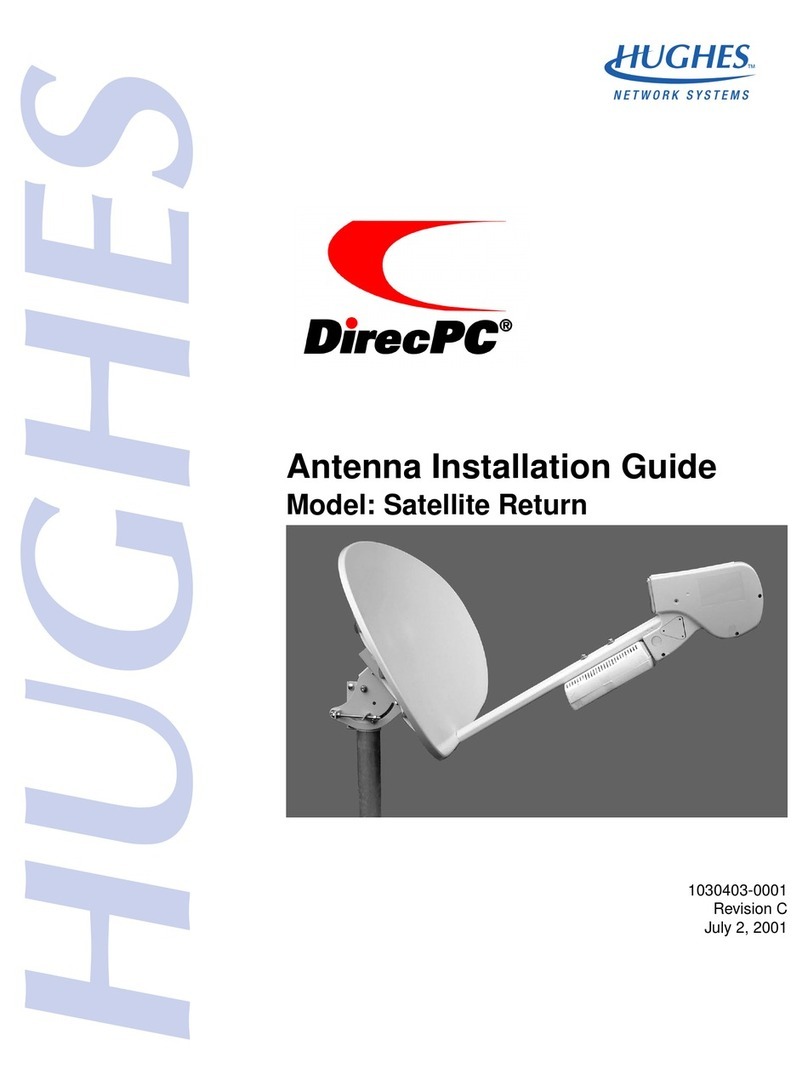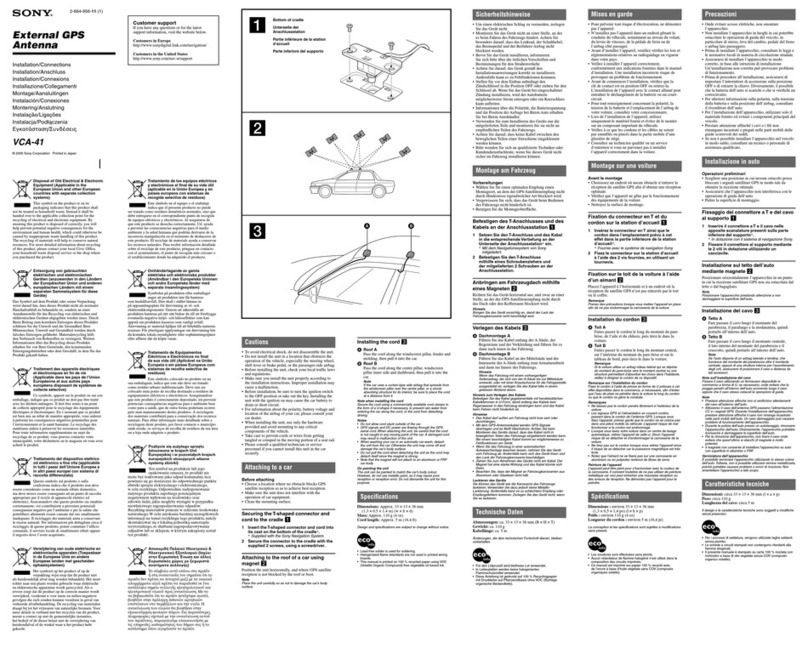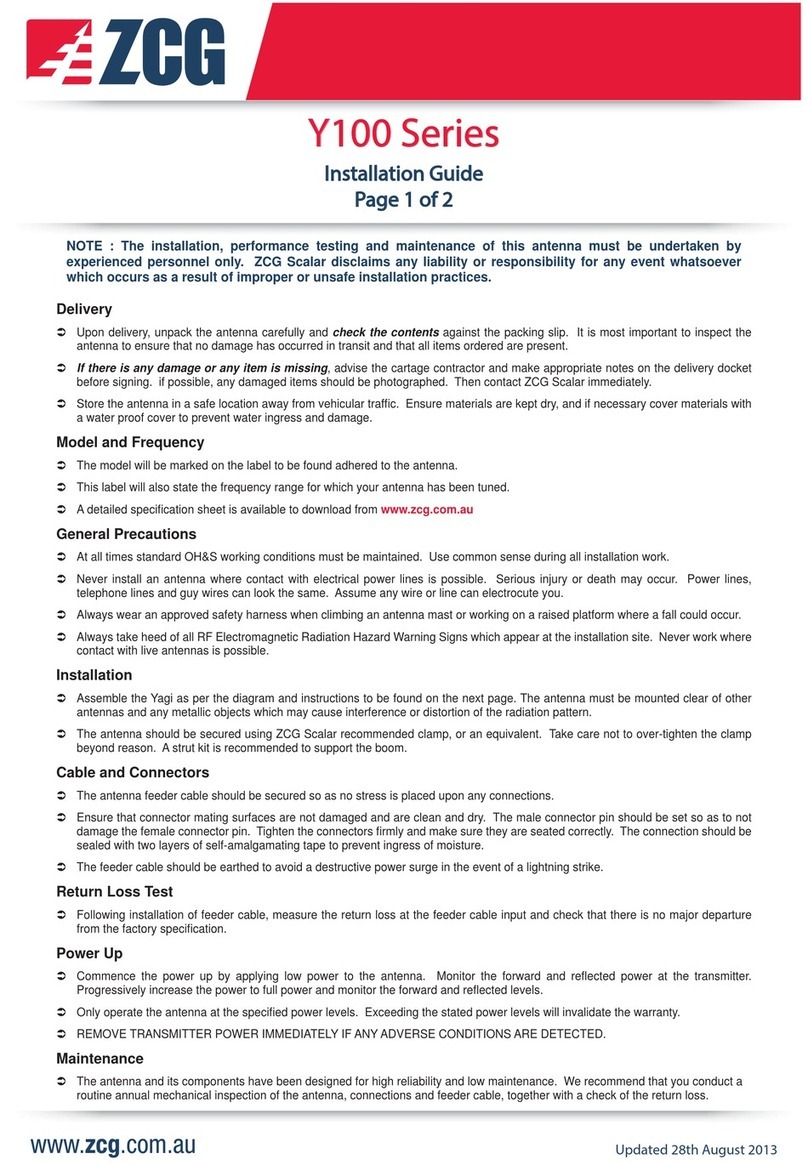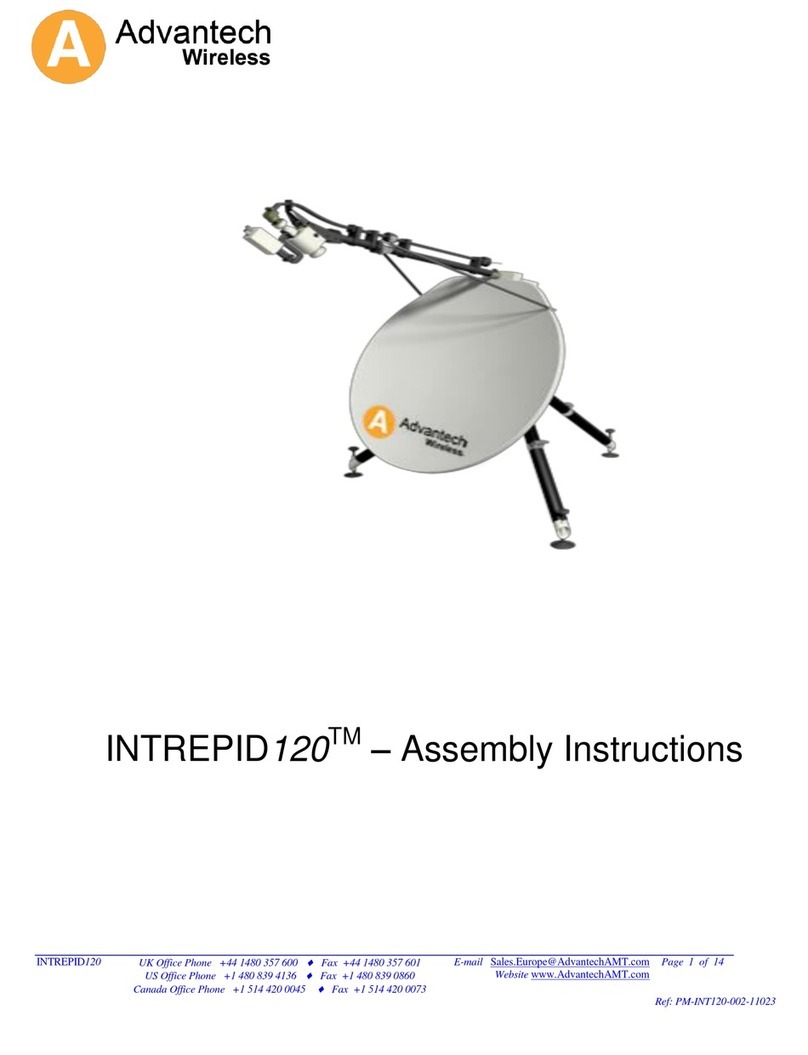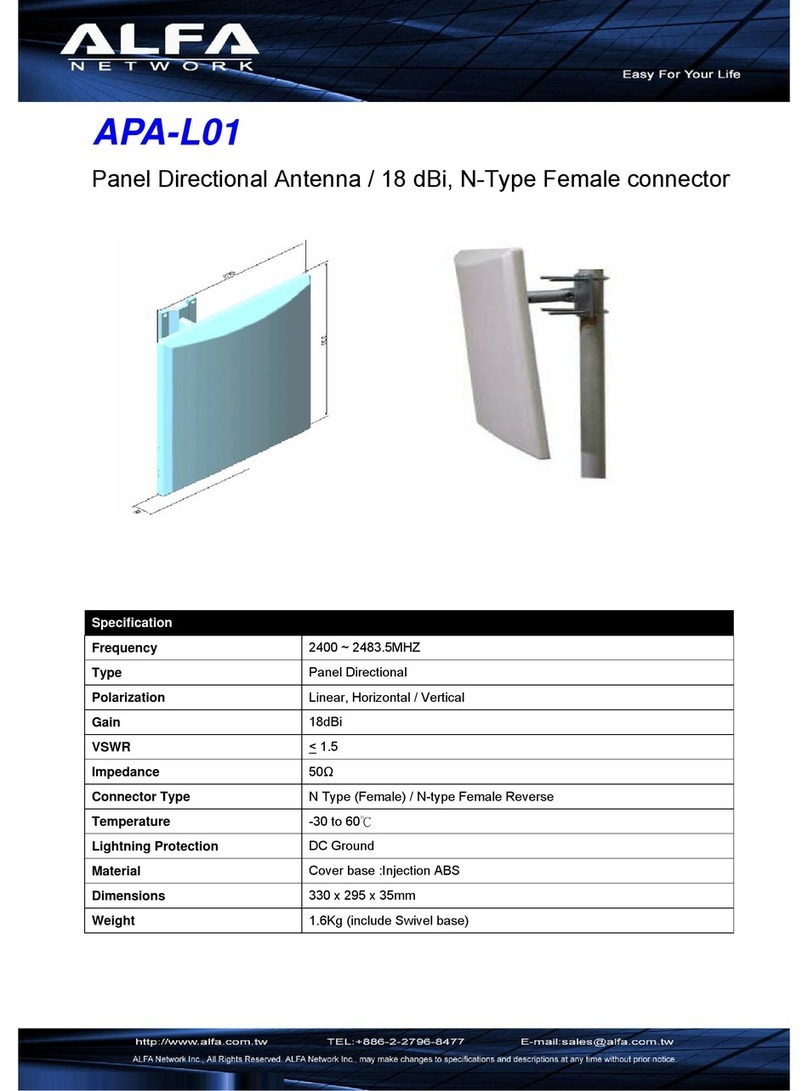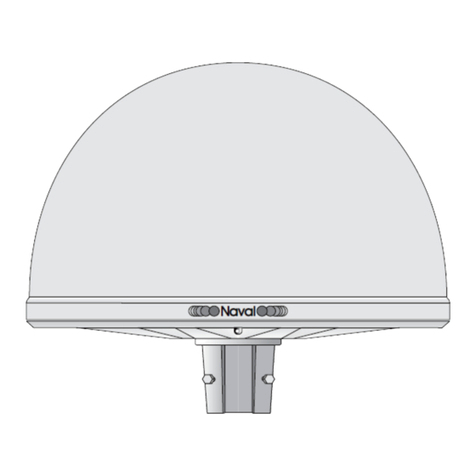Hughes HughesNet Ka-band User manual
Other Hughes Antenna manuals
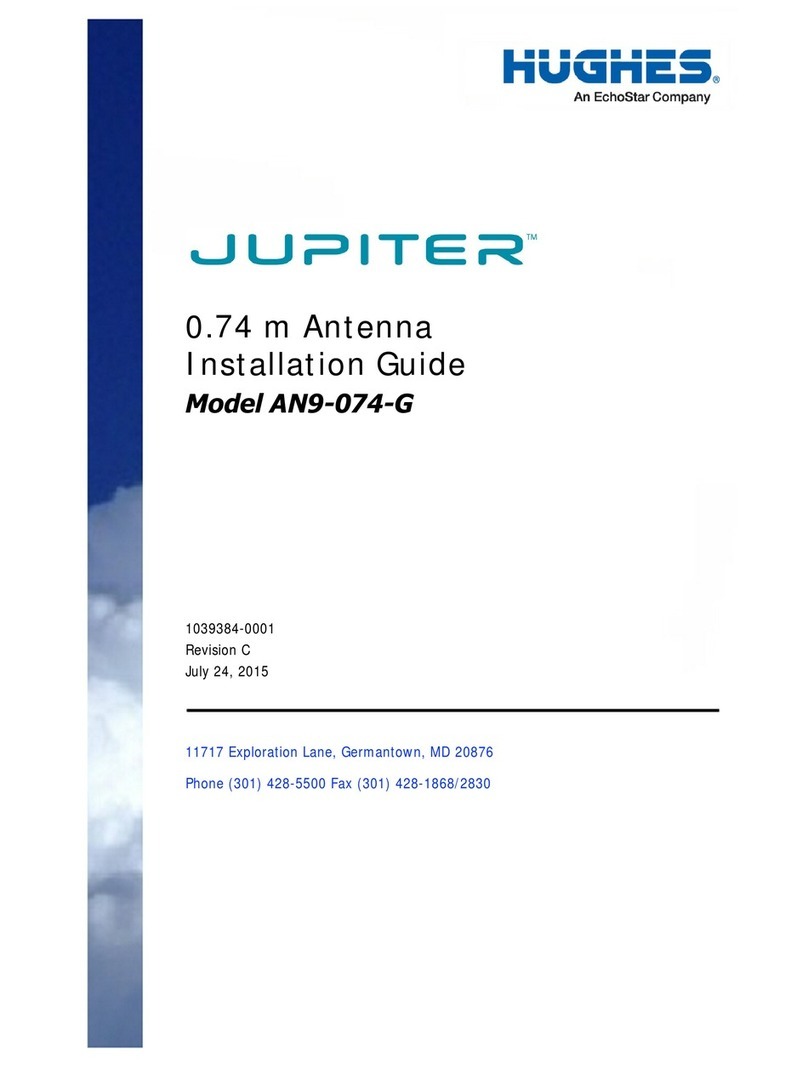
Hughes
Hughes AN9-074-G User manual
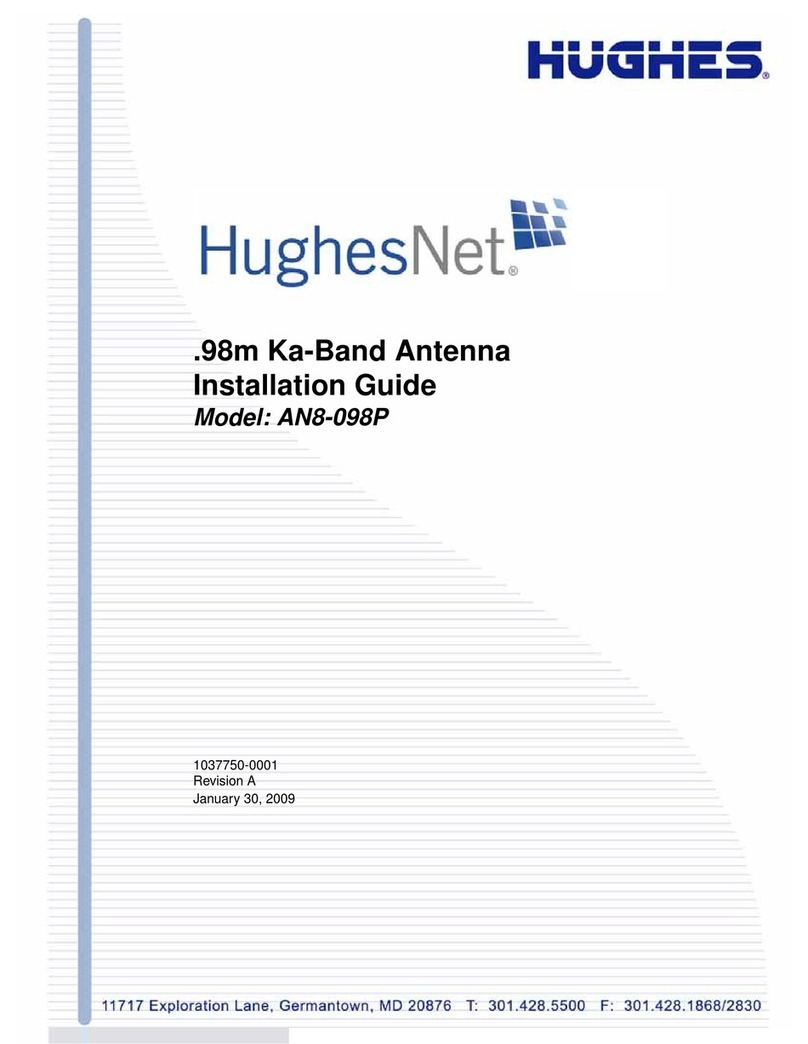
Hughes
Hughes AN8-098P User manual
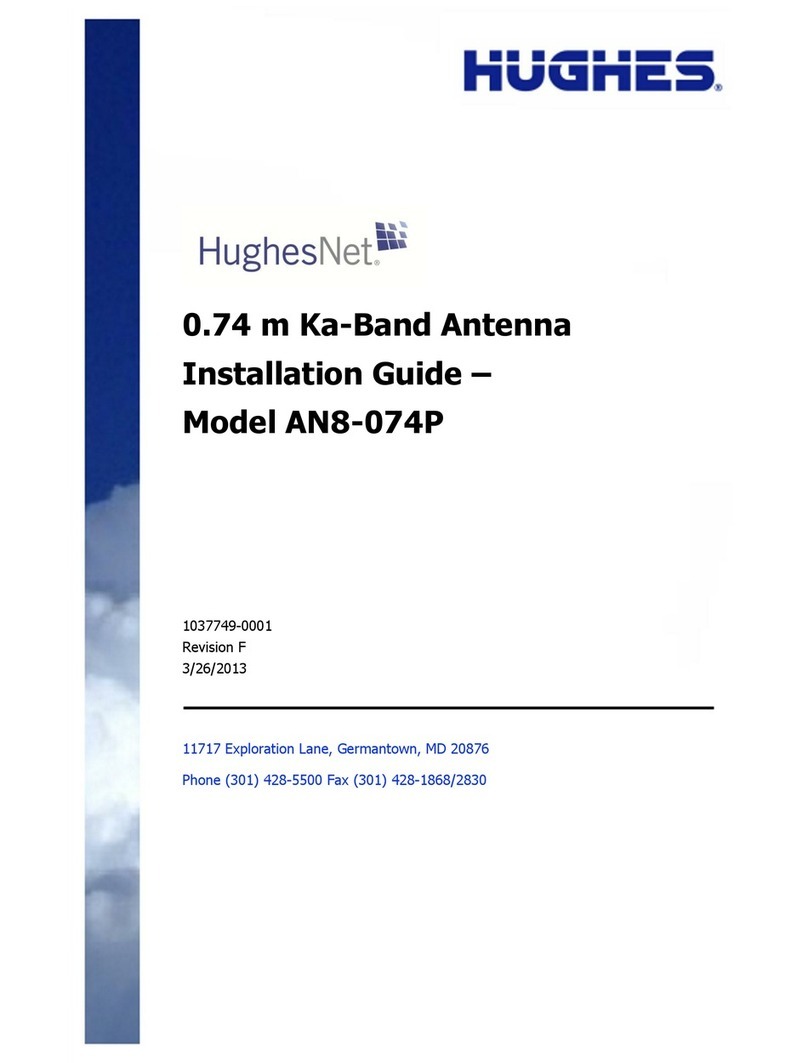
Hughes
Hughes AN8-074P User manual
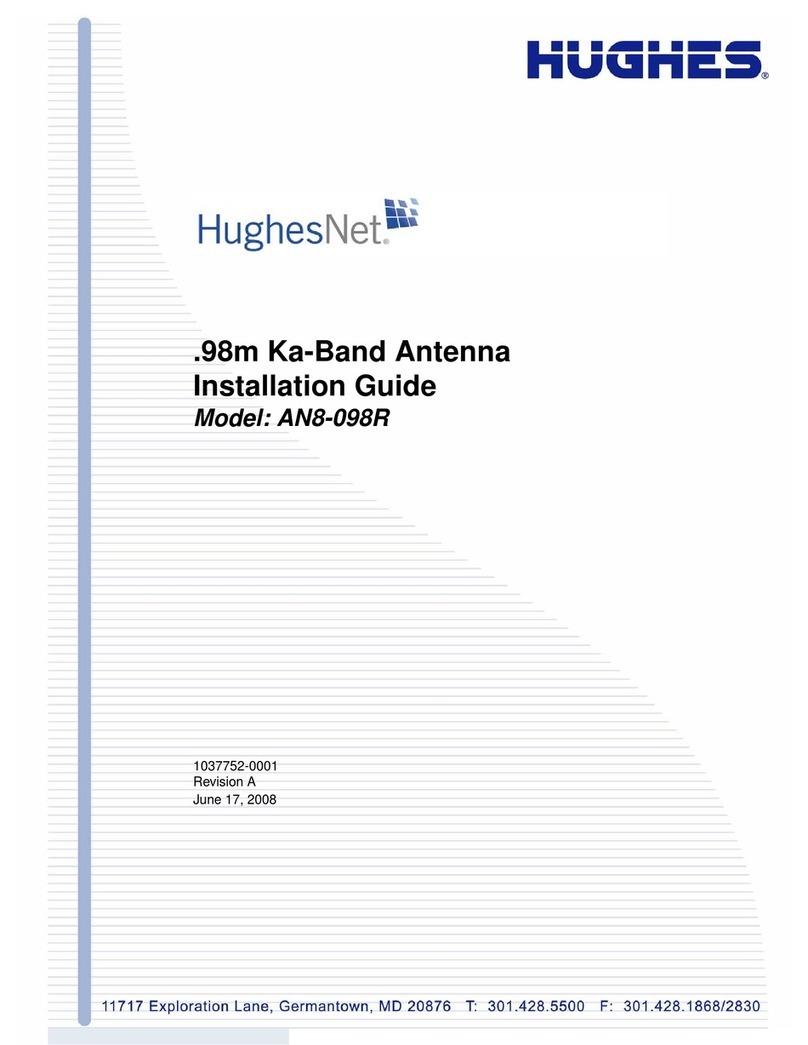
Hughes
Hughes AN8-098R User manual

Hughes
Hughes BGAN Remote Antenna User manual
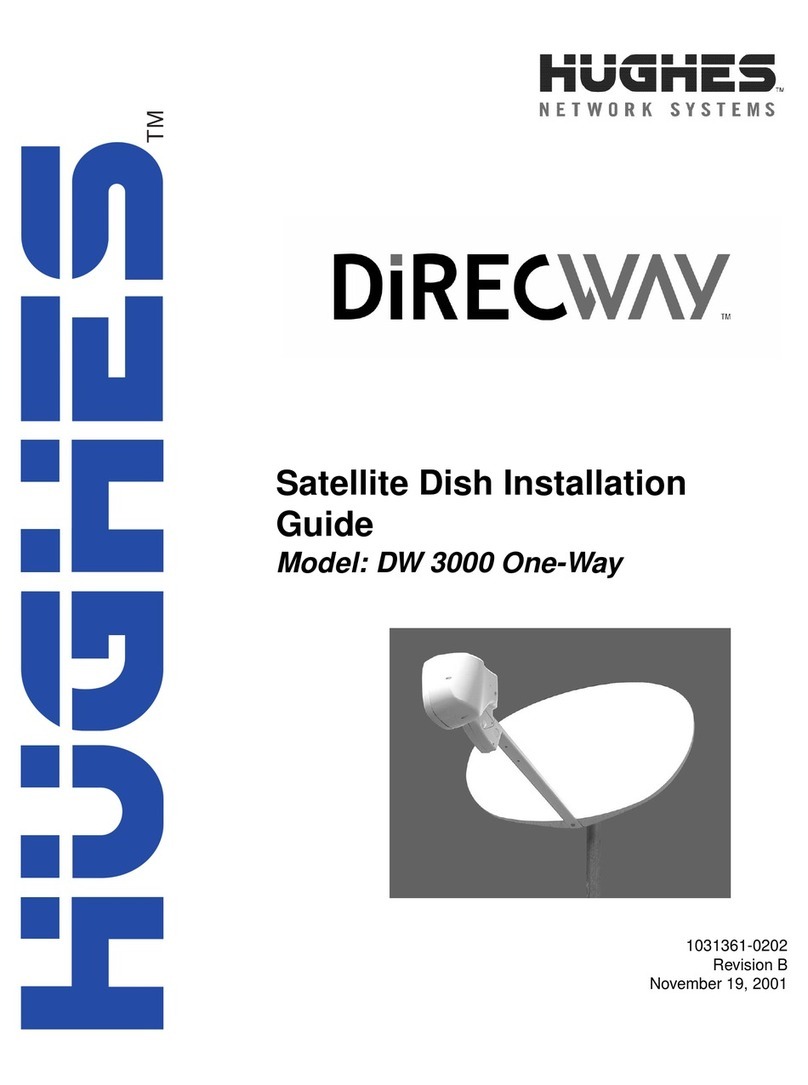
Hughes
Hughes DW 3000 One-Way User manual

Hughes
Hughes AN6-098P User manual
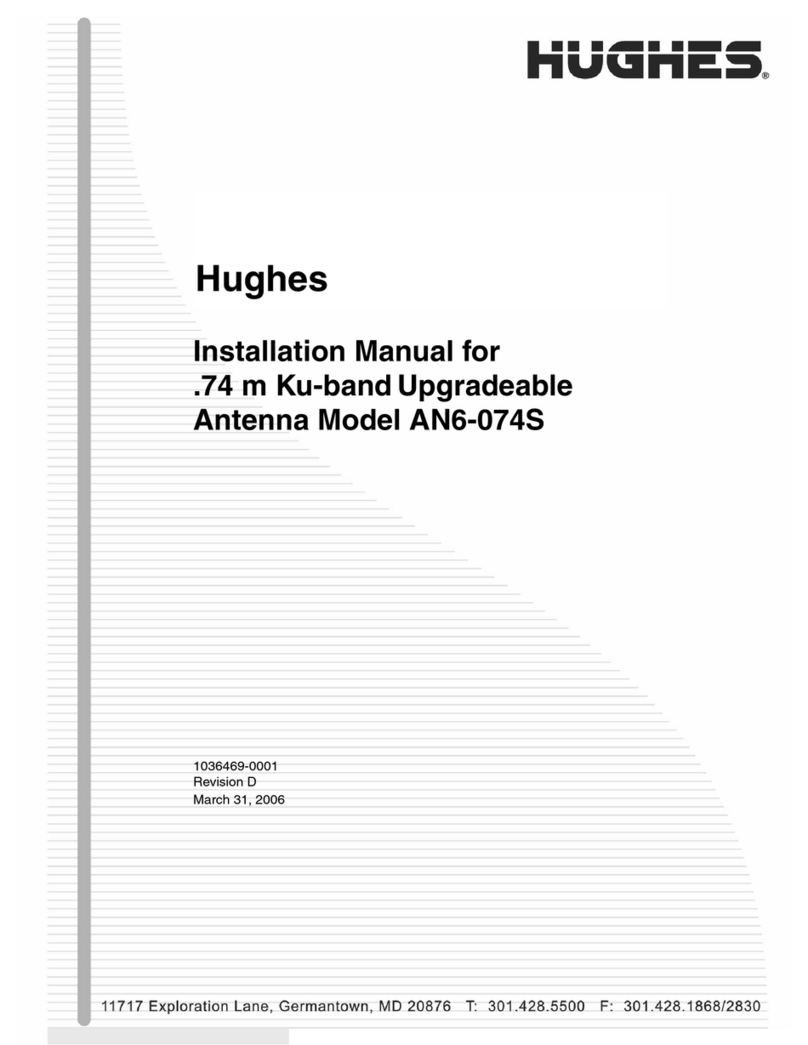
Hughes
Hughes AN6-074S User manual

Hughes
Hughes Jupiter User manual
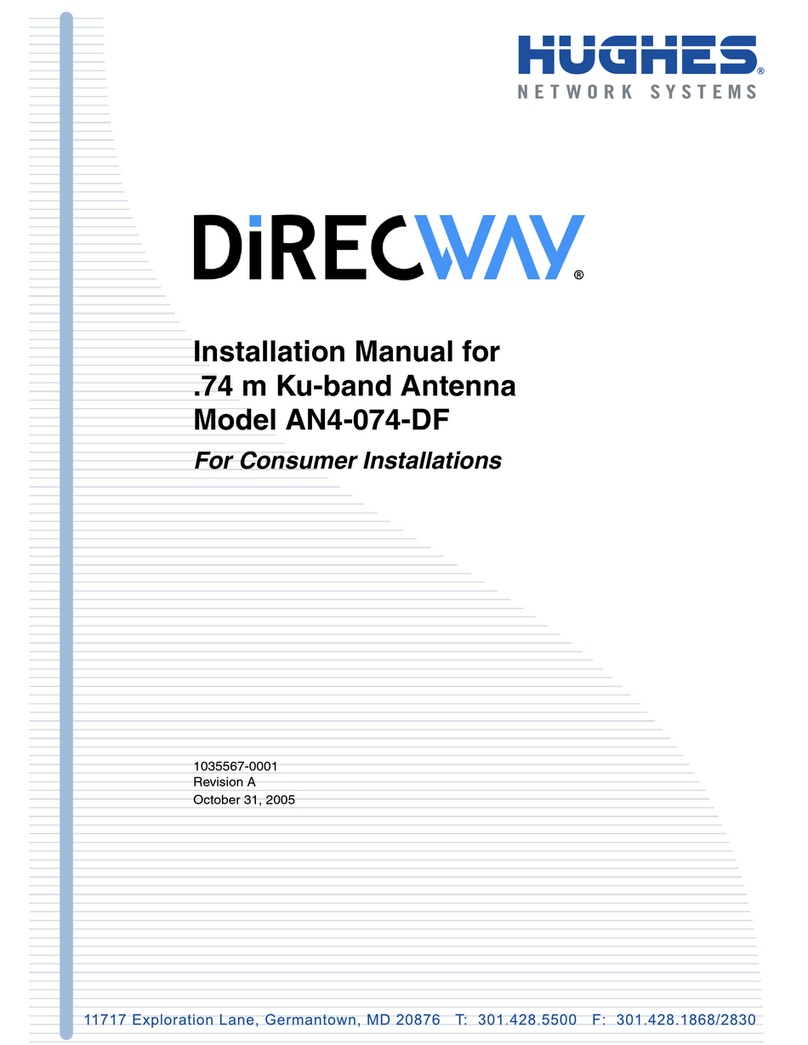
Hughes
Hughes DiRECWAY AN4-074-DF User manual
Popular Antenna manuals by other brands

DAVIS
DAVIS Windex AV 3160 installation instructions
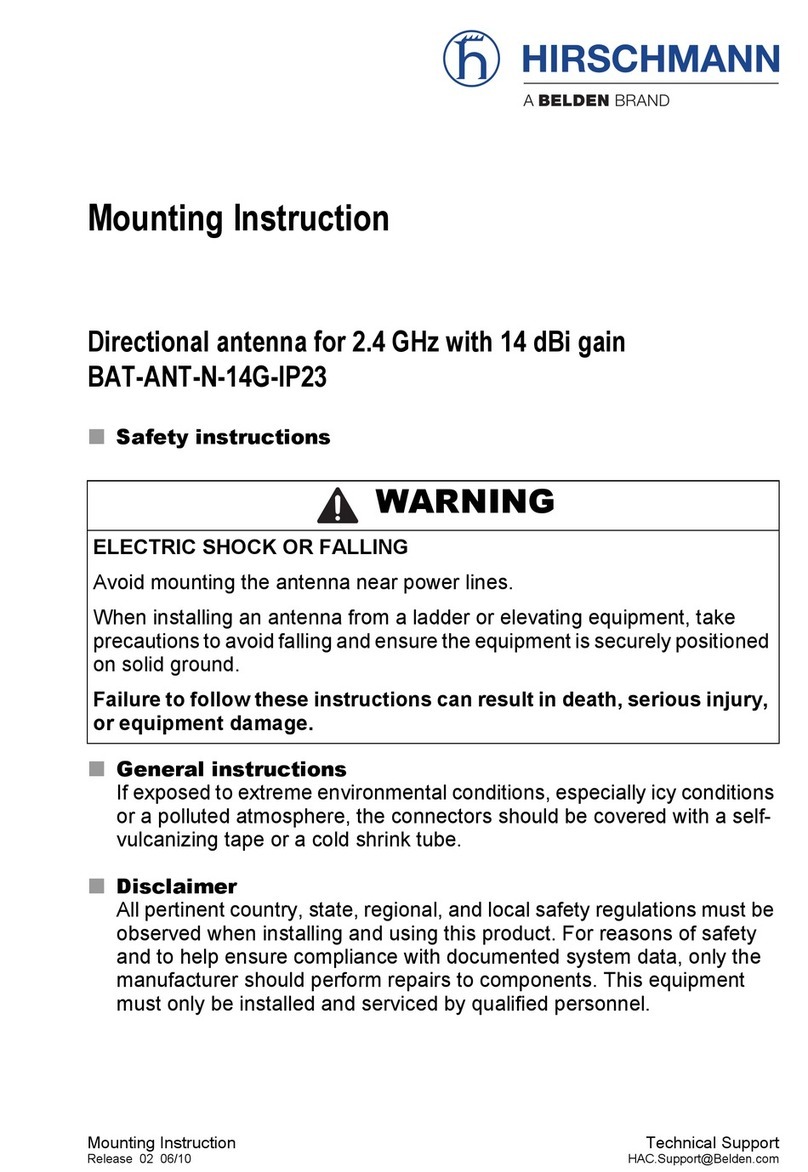
Belden
Belden Hirschmann BAT-ANT-N-14G-IP23 Mounting instruction
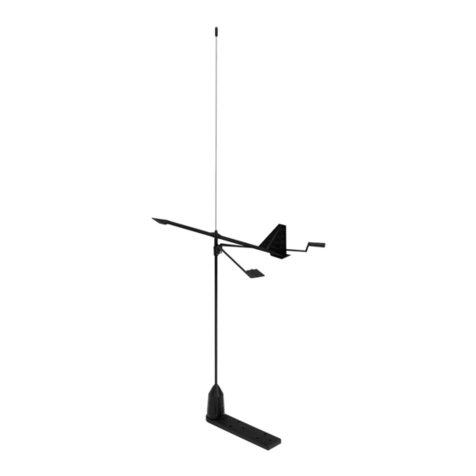
Vtronix
Vtronix YHK Fitting instructions

KVH Industries
KVH Industries TracVision 6 Technical manual

Leica Geosystems
Leica Geosystems GS10 user manual
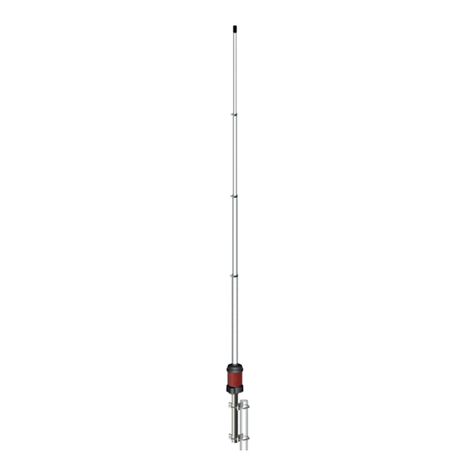
Sirio Antenne
Sirio Antenne Gain-Master manual
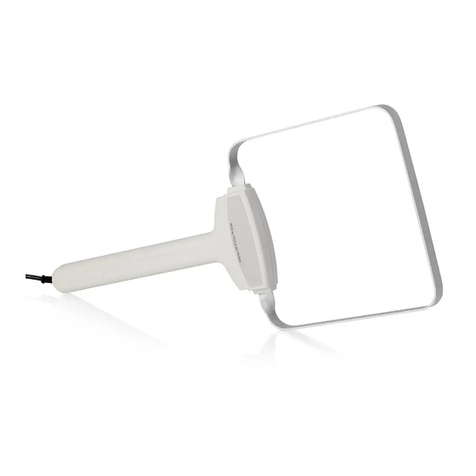
Feig Electronic
Feig Electronic ID ISC.ANTH200/200 Series manual
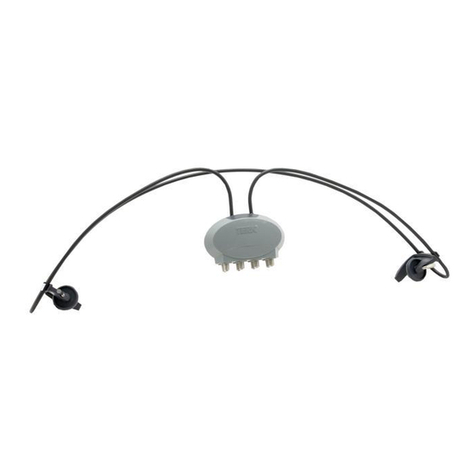
TERK Technologies
TERK Technologies TV44 owner's manual
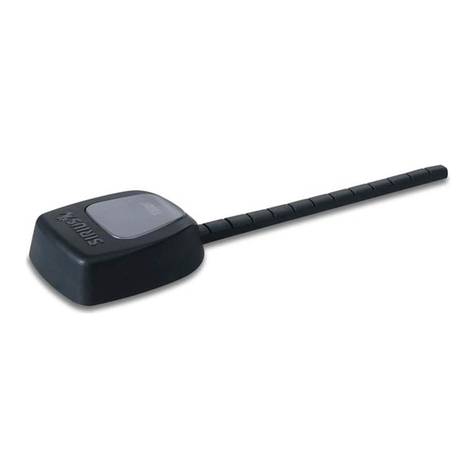
TERK Technologies
TERK Technologies SIR3 owner's manual
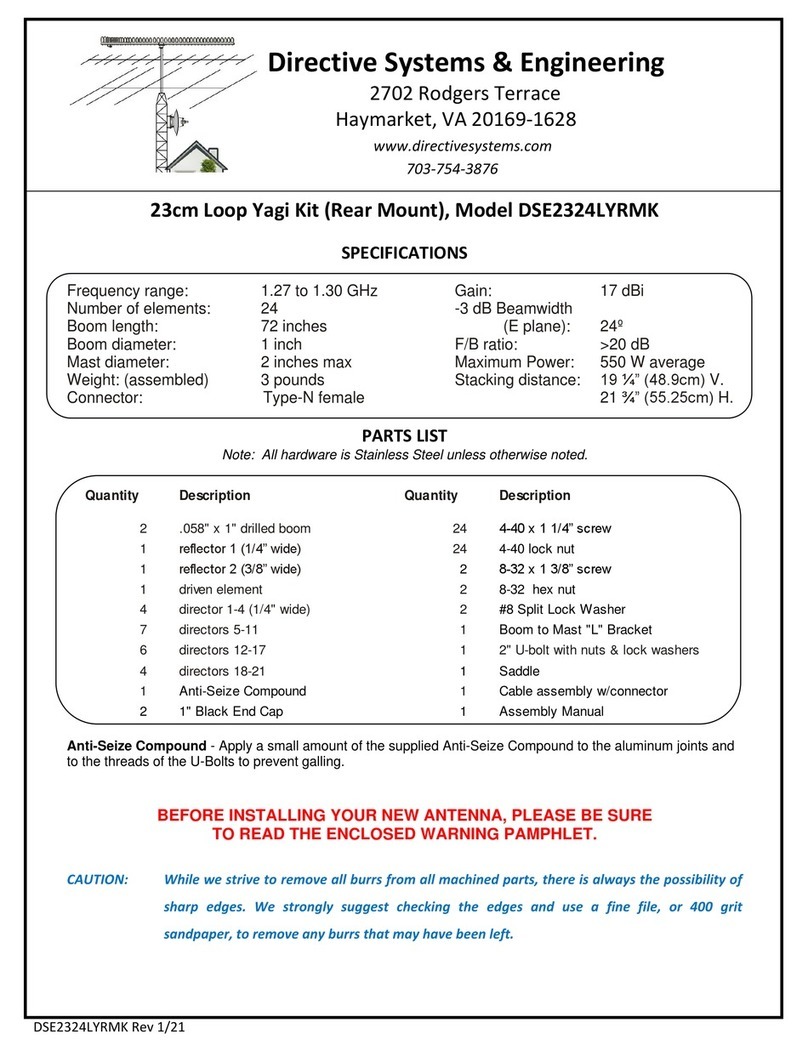
Directive Systems & Engineering
Directive Systems & Engineering DSE2324LYRMK quick start guide

HP
HP J8999A instructions
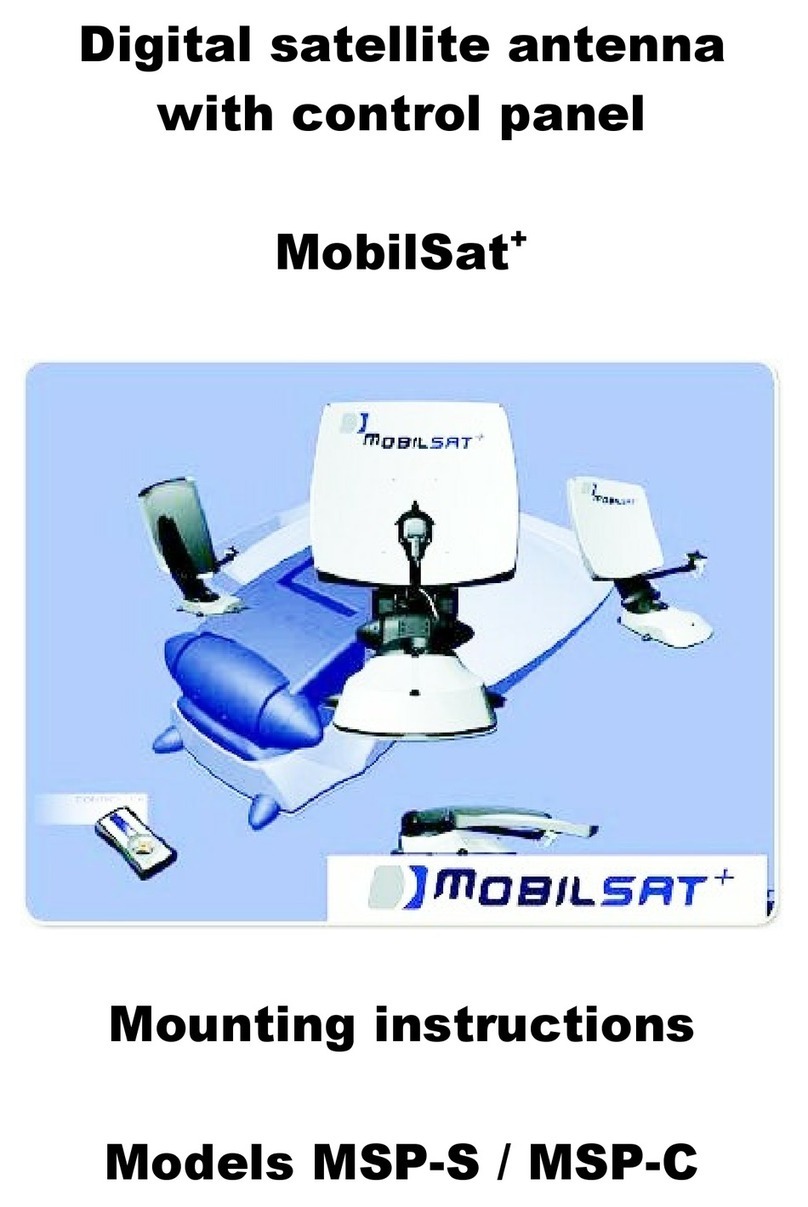
MobilSat
MobilSat MSP-S Mounting instructions
